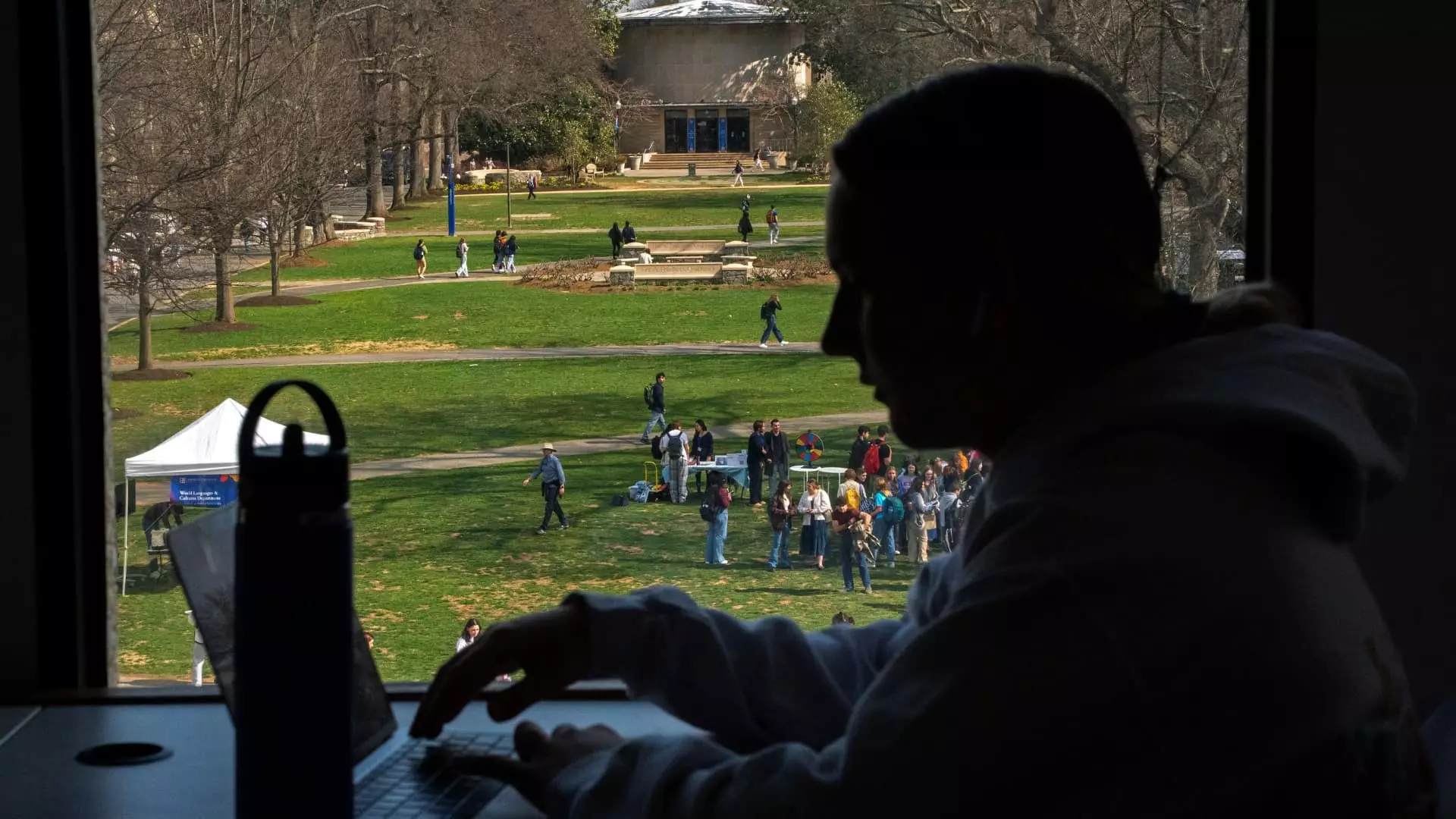The specter of financial ruin looms over more than 9 million student loan borrowers in the United States, as they stand on the precipice of an impending crisis. The Federal Reserve Bank of New York has delivered a stark warning that as many of these individuals default on their payments, they could see credit scores plummet significantly. For those who pride themselves on maintaining good credit, the potential for a staggering 171-point drop is not just a number; it represents lost opportunities and a difficult uphill battle towards financial recovery.
Credit scores serve as the gatekeepers in the realm of personal finance, influencing everything from loan approvals to interest rates. With a scoring range from 300 to 850, the ramifications of a drop into the low 600s or even below could permanently alter the financial landscape for many borrowers. The crisis is exacerbated by the fact that borrowers with existing top-tier scores will feel the impact hardest, highlighting an alarming inequity within the student loan system.
Repercussions Beyond Credit Scores
It’s essential to understand that falling behind on student loans is about much more than a simple number; delinquencies could usher in a cascade of disastrous consequences, including wage garnishments and the loss of retirement benefits. These punitive measures have been temporarily shelved but are set to re-emerge with chilling effect now that the pandemic relief period has officially ended. The financial toll on borrowers who are suddenly thrust back into standard repayment terms will likely be crippling as they navigate the treacherous waters of financial responsibility without the lifelines that previously existed.
Doug Boneparth, a certified financial planner, articulates a grim reality: the fallout from missed payments is more than credit damage; it builds a wall that limits access to affordable financing, trapping borrowers in an unhealthy spiral of debt and despair. Additionally, for young borrowers who have yet to establish financial stability, a devastated credit score could be a long-lasting mark of failure that disrupts essential life decisions like purchasing homes or starting businesses.
Countermeasures and Options
In an age where financial resources are burgeoning, borrowers need to be proactive rather than reactive. The good news is that there are strategies available to protect one’s credit standing. Income-driven repayment plans are one such avenue, allowing borrowers to tether payments to their income, which can sometimes drop to nothing. This can feel like a double-edged sword; while it may offer necessary relief, relying on such plans can also perpetuate a cycle of indefinite dependency on government intervention rather than fostering self-sufficiency.
Moreover, options exist for deferments and forbearances that can pause payments without incurring negative consequences on credit reports—as long as the terms are adhered to faithfully. However, these temporary band-aids can often mask the underlying issues of financial literacy and fiscal responsibility and don’t address the broader systemic flaws prevalent in the American education financing system.
The Path to Rehabilitation
If borrowers find themselves in default, experts suggest rehabilitation or consolidation as viable avenues for recovery. Rehabilitating a loan by making nine voluntary payments may provide a route back to status quo, albeit one that requires discipline and commitment over a lengthy ten-month horizon. Consolidation offers a different angle, providing a fresh start with more manageable stakes but might also lock borrowers into less favorable terms.
Navigating these options is increasingly complicated, requiring constant vigilance. Borrowers must stay informed about their debts and regularly check their credit scores—activities that can feel burdensome and intimidating. Online resources such as Studentaid.gov and AnnualCreditReport.com can demystify the process, but too often, borrowers find themselves drowning in a sea of confusion and misinformation.
The landscape of student loans and borrower responsibility is fraught with challenges. Each new delinquency could carve deep scars in credit histories, and despite the existence of strategic precautions, the system itself must evolve to truly support borrowers in a meaningful way. There’s an urgent need for reform, compassion, and understanding in recognizing that education is a right, not a privilege, and should not forever tether students to a lifetime of financial hardship.

Leave a Reply